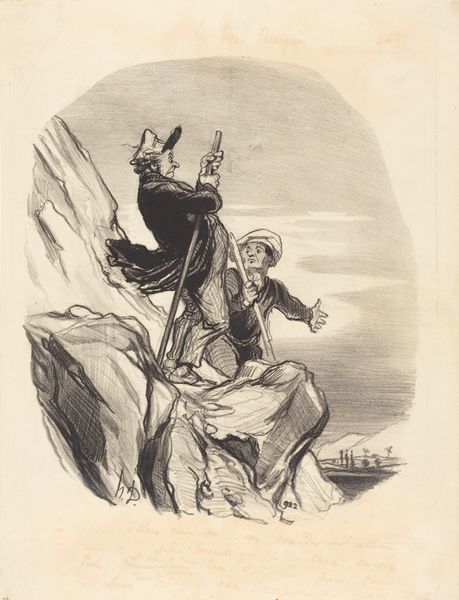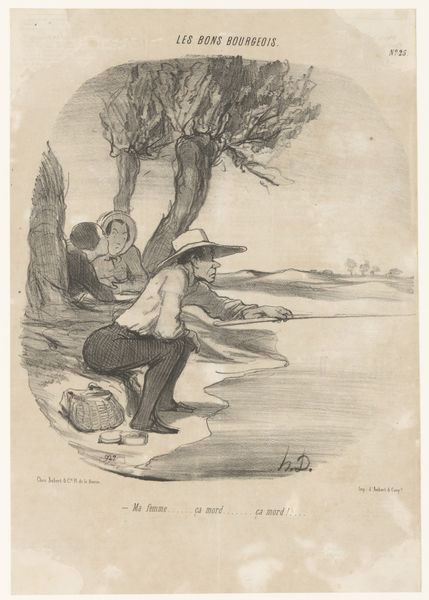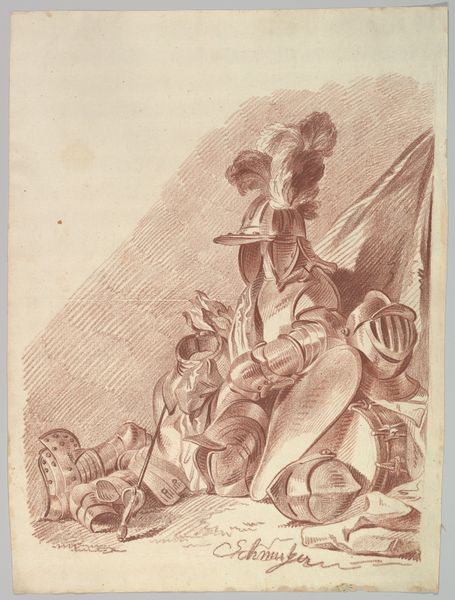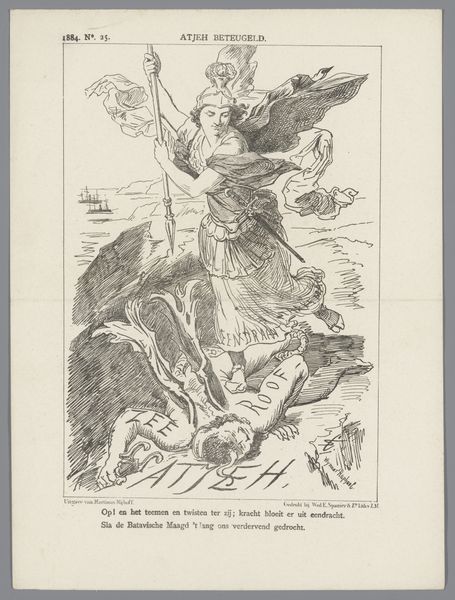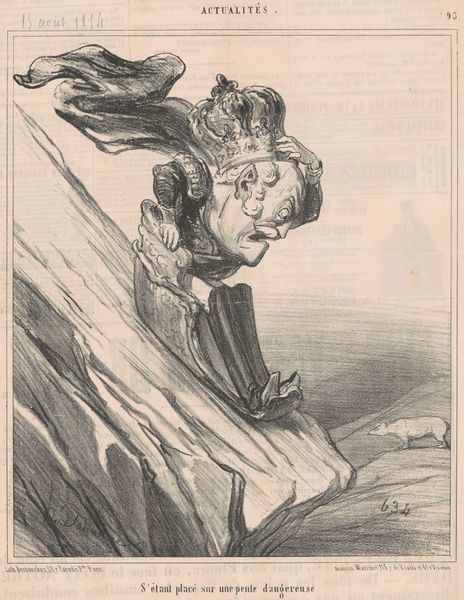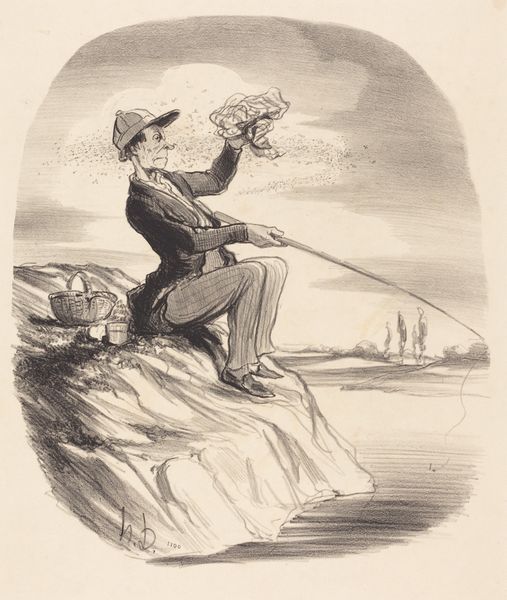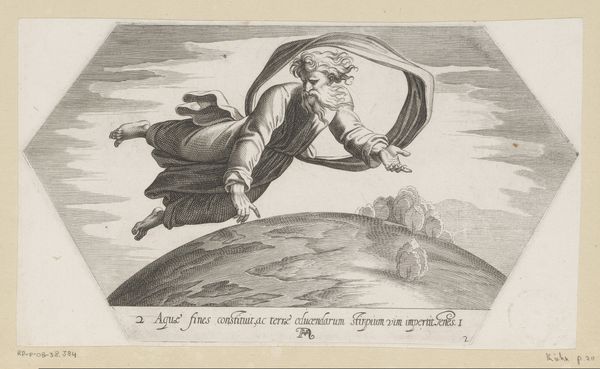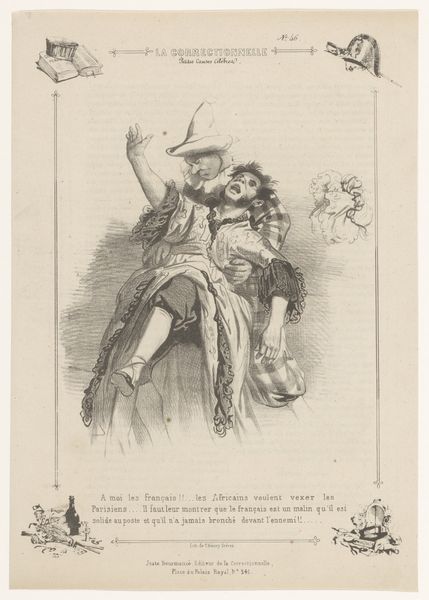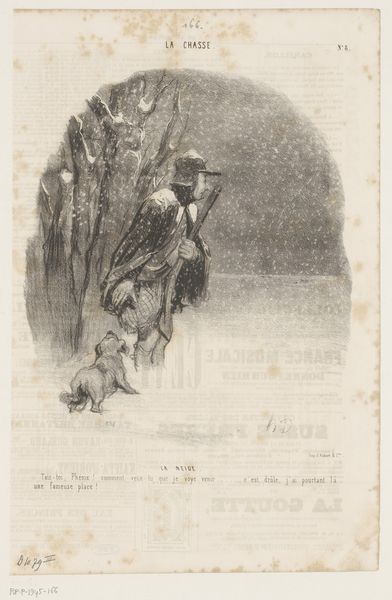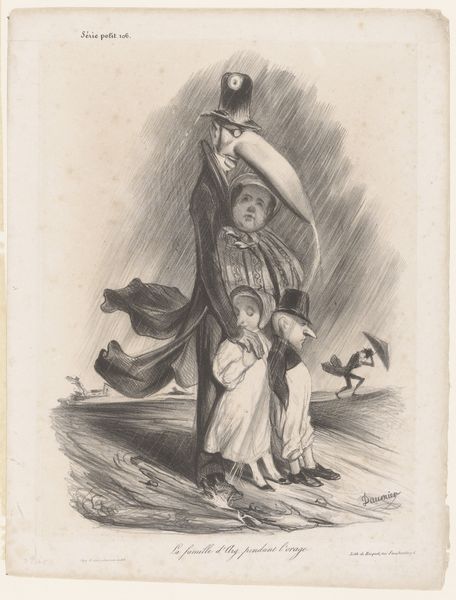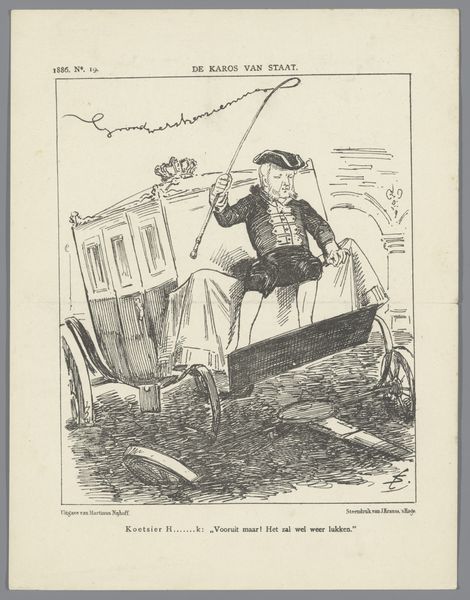
lithograph, print
lithograph
caricature
figuration
romanticism
genre-painting
Dimensions: height 344 mm, width 239 mm
Copyright: Rijks Museum: Open Domain
Curator: This lithograph by Honoré Daumier, created in 1846, is titled "Man with Mountain Guide at a Precipice," currently housed at the Rijksmuseum. It’s striking, wouldn’t you agree? Editor: Immediately, I'm drawn to the dynamic imbalance. The sharp, almost violently rendered rocks contrast with the smooth, terrified face of the man. The sheer drop hinted at…it induces a shiver, even on paper. I feel an immediate tension between the human and material. Curator: Precisely. Note how Daumier uses line—thick, decisive strokes to define the rocks, creating a sense of mass and danger. Then look at the Bourgeoisie. The meticulous cross-hatching gives the texture of his fancy overcoat! Consider it within the framework of Romanticism—the sublime, the confrontation with nature's overwhelming power. Editor: The sublime reduced to… a comical grumble, you mean? Daumier wasn't just illustrating a scene; he was commenting on class, labor, and access to experience. Think about the actual printing process: the labour involved in creating multiple editions of this commentary and who the material labour serves in its consumption as bourgeoisie entertainment. This isn't about aesthetic rapture; it's about the material conditions that enable it. Curator: But there's still a dialogue happening within its own visual language. The exaggerated expressions and gestures—the mountain guide pointing into the abyss… It emphasizes the precariousness and even folly of this journey. Editor: Absolutely. But that visual language becomes far more potent once we see it rooted in reality. These Romantic landscapes, sold as exoticism were then part of the machinery of burgeoning tourism, only possible through material infrastructures, class divisions and even labour exploitation of its guides. What narratives are obscured in pursuit of an idea such as “the sublime?” Curator: Well, seeing how the piece uses formal devices, specifically caricature and printmaking—we cannot overlook the broader socio-political critique aimed at the Bourgeoisie. Editor: And how can you separate the criticism without knowing it was constructed through those social issues that are embodied in its physical making and distribution? Thank you for sharing this very interesting work, that truly ties labor, economy and sublime folly to material circumstance. Curator: A wonderful reminder that the object itself is, as usual, merely the starting point!
Comments
No comments
Be the first to comment and join the conversation on the ultimate creative platform.
